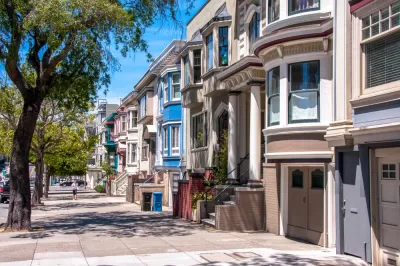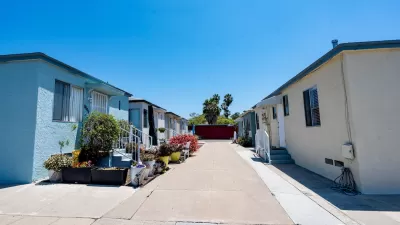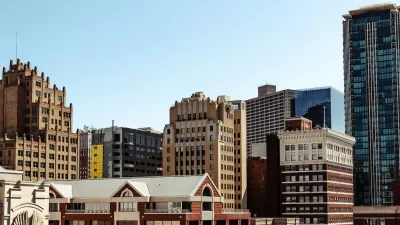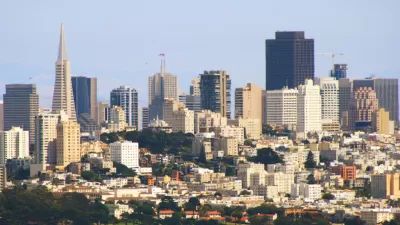As the housing crisis continues, advocates are increasingly wary of historic preservation efforts that serve to perpetuate historic inequities and keep housing costs high.

San Francisco’s St. Francis Wood neighborhood was just added to the National Register of Historic Places, making it much more difficult to build projects, reports Benjamin Schneider in the San Francisco Examiner. Housing advocates decry the move as a NIMBY action to prevent development in the area.
The historic designation makes the neighborhood exempt from SB9, SB10, and SB35, all state bills that allow for higher-density construction in an effort to alleviate the state’s housing crisis and undo decades of exclusionary and racist policies. “If you are preserving structures with the requirement that they remain single-family homes forever, when the origin of that single-family home was so Black people and Japanese people and Chinese people could not live there, is that really what you want to preserve?” asks Annie Fryman, a housing policy expert working for Abodu.
Activists worry that more communities will follow suit. “Already, wealthy communities from Palo Alto to Pasadena have tried to skirt SB 9, the statewide duplex law, by creating historic districts.”
“Fryman thinks there could have been a middle ground where the streets, parks and monuments of St. Francis Wood could have earned a historic designation but not the houses, which she describes as a ‘jumbling and sort of incoherent mix of 25 disparate revival styles.’”
While Fryman acknowledges that all neighborhoods can be precious to their residents, “If we historically preserve every neighborhood in San Francisco, we will be taking an enormous step backward, both in terms of equity and racial outcomes, and our housing crisis.”
Related Stories:
FULL STORY: St. Francis Wood earns historic designation, sparks backlash

Montreal Mall to Become 6,000 Housing Units
Place Versailles will be transformed into a mixed-use complex over the next 25 years.

Planetizen Federal Action Tracker
A weekly monitor of how Trump’s orders and actions are impacting planners and planning in America.

DARTSpace Platform Streamlines Dallas TOD Application Process
The Dallas transit agency hopes a shorter permitting timeline will boost transit-oriented development around rail stations.

Study: 4% of Truckers Lack a Valid Commercial License
Over 56% of inspected trucks had other violations.

Chicago Judge Orders Thousands of Accessible Ped Signals
Only 3% of the city's crossing signals are currently accessible to blind pedestrians.

Philadelphia Swaps Car Lanes for Bikeways in Unanimous Vote
The project will transform one of the handful of streets responsible for 80% of the city’s major crashes.
Urban Design for Planners 1: Software Tools
This six-course series explores essential urban design concepts using open source software and equips planners with the tools they need to participate fully in the urban design process.
Planning for Universal Design
Learn the tools for implementing Universal Design in planning regulations.
City of Mt Shasta
City of Camden Redevelopment Agency
City of Astoria
Transportation Research & Education Center (TREC) at Portland State University
US High Speed Rail Association
City of Camden Redevelopment Agency
Municipality of Princeton (NJ)





























